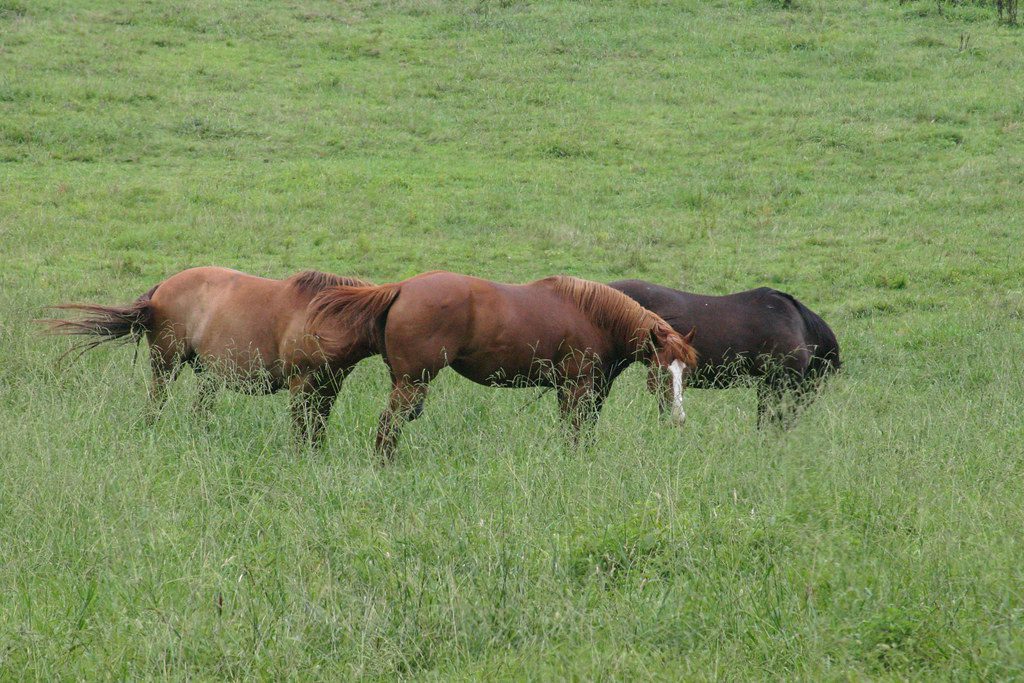CDFA is on the front lines of a silent battle, one that impacts California’s horses and the equine industry every single day. While outbreaks like bird flu may get more headlines, the battle to safeguard California’s equine community against diseases is waged daily through thoughtful, consistent effort.
CDFA’s Animal Health Branch works to protect horses from these threats — diseases like Equine Infectious Anemia (EIA) and Equine Herpes Myeloencephalopathy (EHM). In fact, nearly every day since the start of 2025, California has had at least one, if not multiple, equine disease quarantines actively in place.
EIA: An Invisible Threat
Equine Infectious Anemia is a bloodborne disease with no cure or vaccine, often leading to a heartbreaking decision for owners: euthanasia. It can be spread by biting insects, but more often is spread by needles used on more than one horse. A significant hotspot for EIA exposure is the clandestine world of unsanctioned quarterhorse racing. Because sanctioned racing is highly regulated to ensure fairness and protect the horses, unsanctioned tracks have become a rapidly rising “workaround” for those who want to race without rules. Over the last five years, 68 EIA cases have been identified, with all but two directly linked to this high-risk community.
As of June 2025, there have already been 5 EIA cases, leading to quarantines for 51 horses across 4 premises.
| Annual CDFA EIA tests performed on California horses |
| 2019: 28,472 tests; 0 positives 2020: 26,397 tests; 1 positive 2021: 29,527 tests; 1 positive 2022: 30,212 tests; 40 positives 2023: 28,521 tests; 6 positives 2024: 27,169 tests; 15 positives |
EHM: An Evolving Threat
Equine Herpes Myeloencephalopathy, or EHM, is caused by EHV-1, a herpesvirus that can lurk quietly in an infected horse–showing no signs of disease–and activate at any time. When a horse is sick with EHV-1, it is contagious to other horses by direct contact or contaminated equipment. Unfortunately, some EHV-1 infections can have catastrophic impacts on a horse’s nervous system. While many horses recover with supportive care, others must be euthanized. In 2022, an EHV-1 outbreak led to approximately 1,400 horses being quarantined across California.
Fortunately, recent research is refining our understanding of EHV-1.
One of the most critical discoveries shows that many horses initially test negative for EHV-1 when they first show a fever, only to test positive a few days later. This was strikingly evident during California’s 2022 EHV-1 outbreak, when nearly 40 percent of confirmed cases initially tested negative at the first sign of fever, only to turn positive upon re-test two to three days later. This finding directly led to a change in nationwide protocols, now recommending repeat testing for febrile horses if their initial test is negative.
| CDFA case numbers for EHV-1 over the past five years illustrate how consistently the agency deals with this challenge |
| 2020: 23 cases 2021: 13 cases 2022: 177 cases 2023: 14 cases 2024: 3 cases 2025 17 cases |
Always Working for California’s Horses
California’s large equine community means that CDFA’s robust disease response often sets the standard for other states. Actions like quarantine duration are quickly adopted nationwide. CDFA is committed to science-based improvements and flexible solutions, understanding that every facility presents its own unique challenges for isolation and containment.
Staying ahead of disease threats while also responding swiftly to outbreaks means the system is working well. It also means the equine industry is improving its biosecurity, and that horse owners are collaborating closely with CDFA, veterinarians and other professional organizations on preventative measures. It’s a testament to effective management and a shared commitment to keeping California’s horses healthy.
For more details on each of these equine diseases, please visit:
https://www.cdfa.ca.gov/ahfss/animal_health/equine_herpes_virus.html
And:
https://www.cdfa.ca.gov/ahfss/Animal_Health/EquineInfectiousAnemia.html



